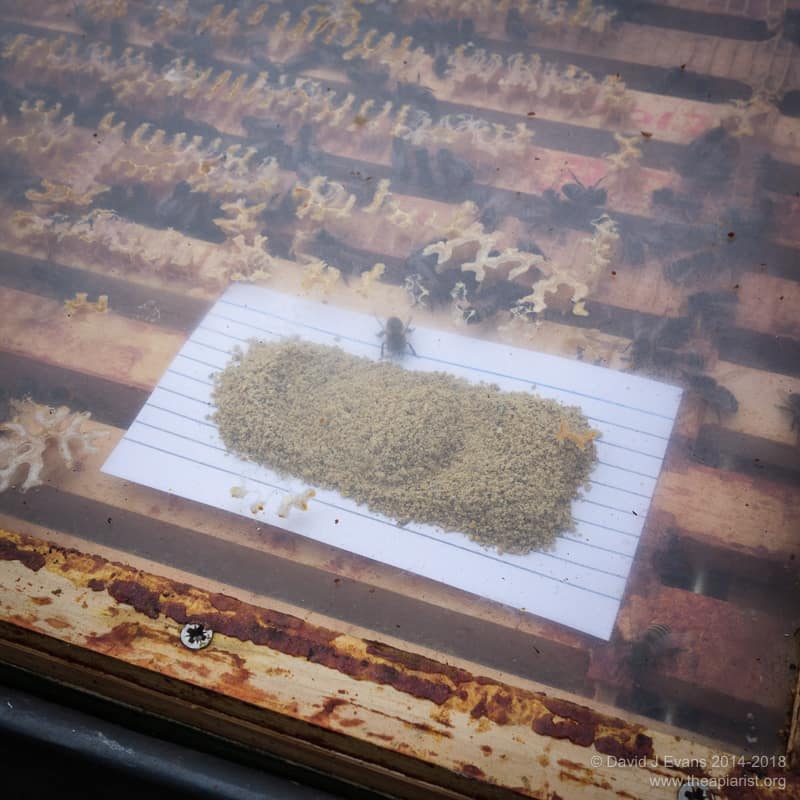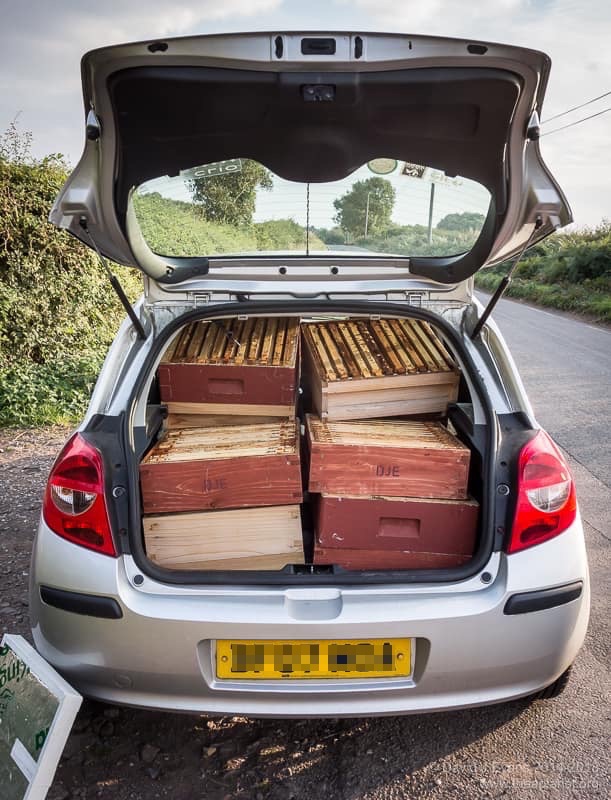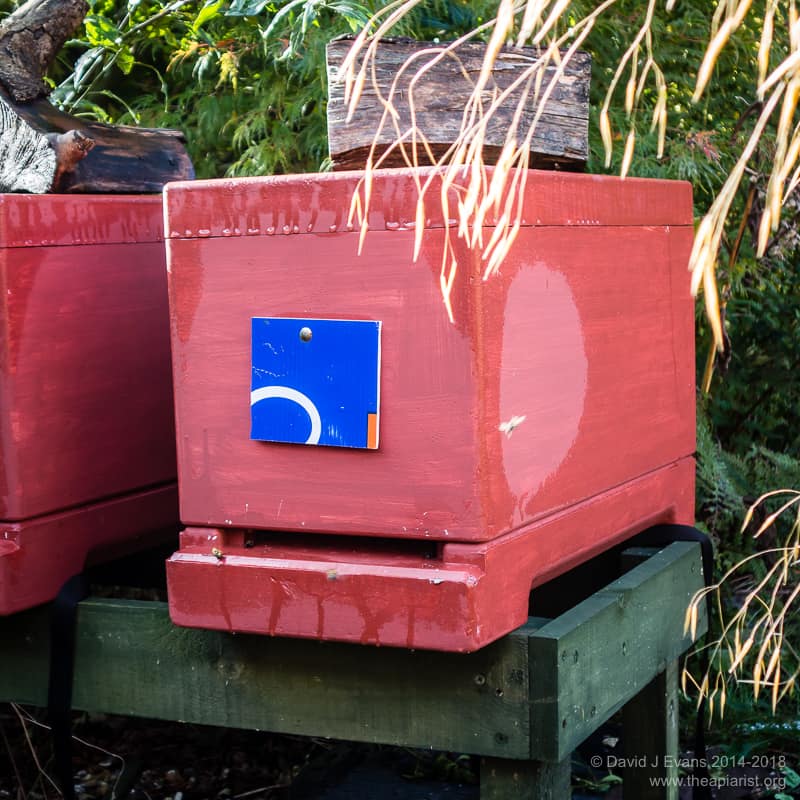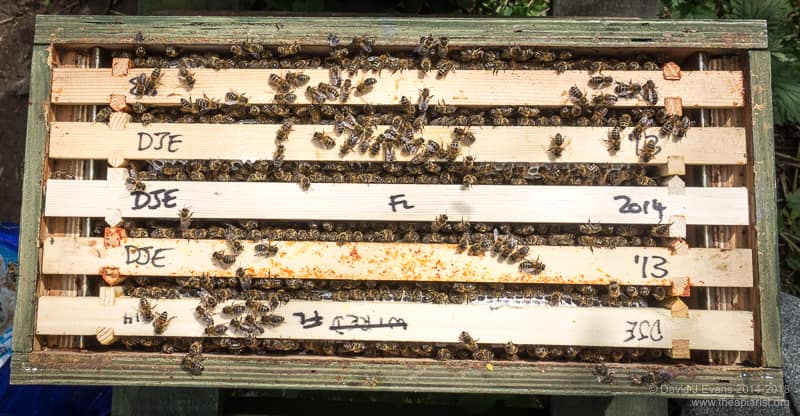The year in prospect

Pollen boost …
Usually by this time of the year I’ve got a reasonable idea of how the season will unroll. I’ll know how many colonies are looking strong coming out of the winter. I’ll be planning to boost the colonies (usually about now) that are closest to the oil seed rape with thin syrup and pollen to maximise the colony build up and honey yield. Finally, I’ll have an idea of how many colonies I’ll be selling off (usually as nucs) and so need to replace during the course of the coming season. The vagaries of the weather will slow things down or speed things up, but broadly things can be expected to proceed much as they’ve done over the last few years.
Go West North young man

Room for a couple more
But 2015 is going to be very different as I’m moving to Fife in Scotland. In addition to the usual house selling, house buying, new job, removals etc. I’ll be moving all of my beekeeping activities in about the middle of the season to a small village about 20 miles from St. Andrews. This has necessitated a major rethink of the beekeeping year, with the emphasis on having the majority of my colonies ready to move in late July.
I’m still at the planning stage but am currently intending to do some or all of the following:
- accept that the year is likely to be a write-off as far as the main season honey crop is concerned … the last thing I want to do is to be moving colonies piled high with half filled supers.
- review colony behaviour and performance early in the season – health, temper, strength etc. with the intention of only keeping the best. With no need to generate honey I should be able to concentrate on stock improvement.
- start queen rearing from the best colonies as soon as possible, culling the really unsuitable queens, giving away those that are passable and splitting the colonies hard to make up nucs.
- if bees are in short supply for queen rearing try and capture a few swarms in bait hives, replacing the swarmy (by definition) queens with home reared ones. Actually, I’ll be doing this anyway … there’s something wonderful about bees just arriving and setting up home in an empty box you’ve set out for them 🙂
- aim to generate sufficient 5-8 frame nucs (the latter in butchered Paynes boxes), the rest in a motley collection of cedar, plywood and poly nuc boxes. I’m not really sure yet what ‘sufficient’ is …
- get nucs well established by mid/late June so they can be checked over by the regional bee inspector before moving them to Scotland.
- fill a Transit van with nucs and drive up the M6.
The intention is to move nucs in time for them to be well established, putting the very strong ones into full hives before the season ends, with the rest being overwintered for 2016.
How many is sufficient?

Overwintering Everynuc …
I usually have 8-12 production colonies, depending upon the time of the season, the amount of queen rearing I’ve done and the number of swarms that have generously been contributed by neighbouring beekeepers. However, I also need bees for my day job and need to significantly expand my work apiary. So ‘sufficient’ is probably somewhere between 12 and 24 nucs, the upper number possibly defined by the amount I can readily (and safely) accommodate in a van to move north.
Moving bees
I’ve transported nucs from Scottish islands to the Midlands before now, so the move back north shouldn’t be a problem. With a suitable travel screen (most of which I’ll have to build this spring), a van and a cool night it’s a straightforward procedure. It’s certainly a lot less backbreaking than moving full colonies, particularly when they’re piled high with supers. I wouldn’t make the journey in really hot weather or when there might be heavy traffic – although you can spray colonies with water through the travel screen, the high temperatures that occur due to lack of airflow need to be avoided to prevent over-stressing the bees.
It’s always a reassuring sight to manhandle the nucs into the new apiary in the early dawn of a summers day and seeing the first few bees exploring their new environment.
Alternative approaches
An alternative to all this would be to leave full colonies here until the end of the season, then return to collect them. By July the swarming season is pretty-much over so they are reasonably self-contained. With clipped queens and sufficient supers it should be possible to leave the bees to get on with things while I move, returning to collect them in early/mid September. However, the workload in doing this is considerable … 12+ full colonies, 36-48 (hopefully) full supers and a large number of robust hive stands. The prospect of securing a dozen or more colonies for transport together with supers containing perhaps hundreds of pounds of honey is a bit worrying. I realise this is second nature to many who practice migratory beekeeping, but they’re presumably set up with the necessary trailers, straps and experience … most of which I lack.

5 frame nuc colony …
There may yet be other options … whatever, it promises to be a very different beekeeping season.
Join the discussion ...